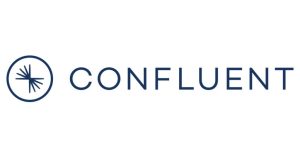
WASHINGTON, August 9, 2022 – The Federal Communications Commission is being warned not to overly burden internet service providers with its Congress-mandated order to collect pricing and subscription rates data from participants in the Affordable Connectivity Program.
Under the Infrastructure, Investment and Jobs Act, the FCC is required by November 15 to adopt rules to collect annual data relating to the price and subscription rates of each internet service offering by a provider participating in the broadband subsidy program, which offers up to $30 per month for low-income households (up to $75 per month on tribal lands) and a one-time $100 off a device.
But a number of submissions are warning the FCC against rules that require any additional data collection efforts beyond the scope of the law so as not to unduly burden providers and, at least one other trade group said, push providers away from participating in the program.

Telecommunications company Lumen, for example, recommended the commission limit the scope of the annual reporting to monthly pricing and to exempt “excessively granular” requirements, such as promotional rates, grandfathered plans, or subscriber-level data, which the commission is proposing to collect.
Communications companies and industry groups want to limit data collection
T-Mobile said in its submission that Congress told the FCC to rely on the broadband consumer labels, which are due this November, for pricing. The commission asked for comment on the interpretation of the IIJA requiring a reliance on price information displayed on the consumer labels.
For subscription information, T-Mobile urges the commission to look at data collection from the Universal Service Administrative Company – which administers high-cost broadband programs for the Universal Service Fund – to avoid “adopting a largely redundant collection that would impose additional burdens” on all parties.
“The IIJA leaves the Commission no discretion to collect any additional price information, and the statute does not require collection of data on other service plan and network characteristics,” such as speed and latency and data allowances, the submission said.

“Collection of this additional data would create additional burdens and is unnecessary,” the submission added.
Similar limitations were also proposed by telecom Starry Inc., which pushed for privacy protection by collecting data at a higher level (such as the state) and working with information collected in other transparency efforts, such as the consumer labels.
Industry association IMCOMPAS, which represents internet and competitive communications networks, told the FCC in a submission that data collection should be limited to the state level to protect consumer privacy and proprietary information of the providers; streamline other data collection, including the consumer labels; and provide instruction on how to providers to better understand the data collection rules.
Concurring with this position is the Wireless Internet Service Providers Association, which said data collection must be simple and should not go to a level of detail that goes beyond what the IIJA calls for. The trade group, which represents small providers, said such data collection beyond that required in the law could burden companies with small teams.
The included data, WISPA said, should be an annual aggregate of items including broadband plans subscribed to by ACP customers, number of subscribers for each plan, and pricing minus promotional rates, taxes, discounts or pricing breakdowns for bundled services. Any additional onerous collection could see providers leave the program, it added.
Industry groups US Telecom and NCTA – Internet and Television Association similarly urged a simple annual report that captured undiscounted monthly pricing of each broadband service offering and the number of customers subscribed. The Competitive Carriers Association and the Cellular Telecommunications and Internet Association also recommended a limited data collection approach.
ACA Connects, a trade group representing small and medium-sized independent operators, said the FCC should direct providers to report numbers of ACP households “that are applying their benefit to each speed tier along with the standard price of each tier on a state-by-state basis” – rather than the FCC-proposed continuous collection of subscriber-level data via the National Lifeline Accountability Database, it said, adding the commission should be mindful of the time it takes for completion, as smaller providers have limited resources.
Others pushing for subscriber-level, more data
The cities of New York and Seattle, in their submissions, said the FCC should collect subscriber-level information to assess different service adoption rates on different plans over time – publishing categories based on price, plan and performance by the zip code. It added it is not seeking information about the households itself, and said this would not be a privacy concern as others have pointed out.
Similarly, the Connecticut Office of State Broadband said the commission should go beyond the IIJA requirements by mandating information including performance of the plans and whether a device is offered.

For the National Digital Inclusion Alliance, data collection on the ACP should include data beyond what’s included in the consumer labels, and should include other items such as installation, equipment, service, miscellaneous, data and usage fees, and state and local taxes.
In a joint submission, non-profit media group Common Sense and internet advocacy group Public Knowledge recommended data collection that is necessary to monitor the ACP, which include promotional rates, taxes, overage costs and device and equipment costs. This way, they say, the FCC can get a better idea of how much is going toward internet access after applying the subsidy. They are also asking for the commission to collect information on whether the subsidy is being used to upgrade or discount current service, and how customers are becoming aware of the program.
The commission is currently trying to get more Americans on the program, which has over 13 million households signed up. That number, the commission said last week, should be much higher. As such, it ordered the development of an outreach program to market the subsidy.
Originally posted on October 26, 2022 @ 12:00 am



